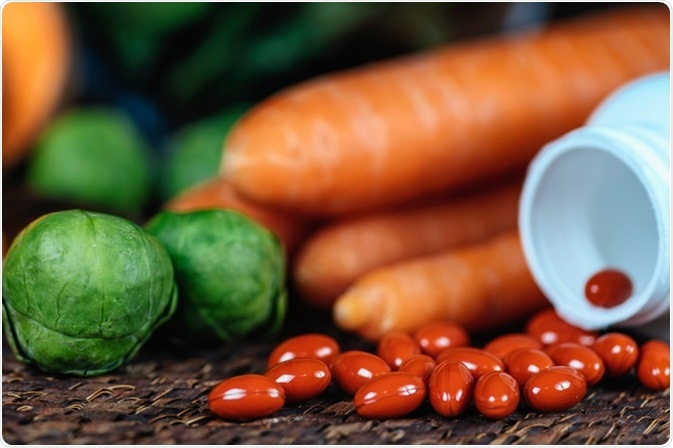Plant flavonoids have been shown to have a positive effect on human health, but their physiological effects and metabolic products remain poorly understood. One reason for this is that as soon as flavonoids reach the blood, they readily bind to plasma proteins and need to be liberated before analysis.
Scientists have described a method to separate and analyze flavonoids by digesting plasma proteins with protease enzymes. The method provided good recoveries when tested for the flavonoid quercetin-3-O-glucuronide (Q3GlcA) and allowed the quantification of the flavonoid by ultra-high pressure liquid chromatography coupled to tandem mass spectrometry (UHPLC-MSn).
 Microgen | Shutterstock
Microgen | Shutterstock
Flavonoids are phenolic secondary metabolites common in higher plants. It is well known that we take up flavonoids with our daily diet from vegetable sources, and research has suggested antioxidant and anticancer activity of flavonoids along with mitigating effects on cardiovascular diseases. However, since flavonoids will be processed in our digestive tract, it is insufficiently understood whether flavonoids, or their metabolic products have an effect with physiological relevance.
Having passed the gastrointestinal tract, the flavonoids or metabolic products are absorbed into the bloodstream, where they readily bind with blood plasma proteins. This makes the analysis of flavonoids in blood challenging, with methods such as liquid chromatography, since proteins have to be removed from the sample without simultaneously removing the protein-bound flavonoids.
Previous protein extraction methods have used solid-phase extraction (SPE) or liquid-liquid extraction (LLE), two common methods for sample preparation for liquid chromatography. While these methods are efficient in protein removal, the flavonoid recoveries have not been well documented.
In the present study, led by Professor Andreas Schieber and Dr. Maike Passon, researchers at the Department of Nutritional and Food Sciences at the University of Bonn (Germany) have now demonstrated that the flavonoid -glucuronide (Q3GlcA) can be recovered from blood plasma by degrading the plasma proteins with protease enzymes. With subsequent liquid-liquid extraction (LLE), the flavonoid samples were suitable for liquid chromatography analysis.
Protease digestion releases flavonoids for UHPLC-MSn
The researchers dissolved the flavonoid Q3GlcA in human blood plasma at a known concentration and added different proteases. After 20 hours of protease digestion, the resulting peptide fragments were precipitated by the addition of organic solvent, leaving flavonoids free in solution. The flavonoids were then analyzed by UHPLC-MSn equipped with a Linear Ion Trap mass spectrometer, with a 6.3 minutes total measurement time.
The investigators validated their UHPLC-MSn method according to the guidelines of the German Federal Environmental Agency (GFEA) and the United States Food and Drug Administration (US FDA), as required for standard quality control (QC) methods.
The method showed a good recovery of flavinoids
The protease pepsin, a common molecular biology reagent, efficiently released the flavonoid Q3GlcA from the blood plasma. With the pepsin digestion, Q3GlcA could be quantified with high sensitivity, even at a concentration below 10 ng/ml.
For comparison, in a preceding study, considerably higher flavonoid concentrations had been observed in blood plasma, demonstrating that this new method will be appropriate for investigating physiological flavonoid levels in nutrition studies.
Q3GlcA recovery rates were 67 +/- 16%, and the analytical method had a coefficient of variation of 24 %. While the authors noted that these values were not yet compliant with the US FDA guidelines (>70% and <15%, respectively), improvements can be made by optimizing the flavonoid extraction method after the protease digestion step.
What about other flavonoids?
The protease digestion was efficient for quantifying Q3GlcA in blood plasma by UHPLC-MSn, although further improvements are required to make this analytical method compliant with regulatory guidelines. Further research will now need to test whether the protease digestion method can also be used for the analysis of other flavonoid compounds in blood plasma.
The research was published in the June 2019 issue of the Journal of Agricultural and Food Chemistry.
Source
Kaiser M et al., An Innovative Approach to the Preparation of Plasma Samples for UHPLC−MS Analysis. J Agric Food Chem 2019, 67, 23, 6665-6671; DOI: 10.1021/acs.jafc.9b01782.
Further Reading
Last Updated: Jul 18, 2019